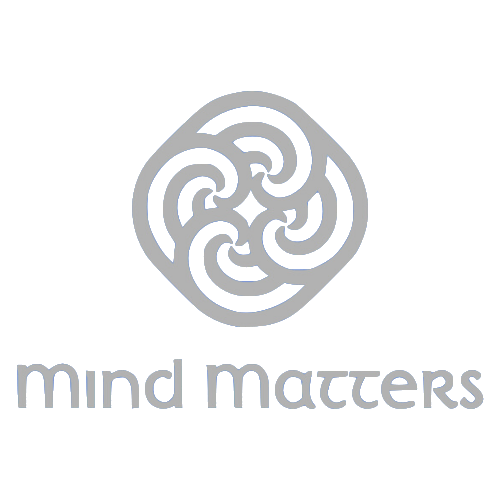Neuro Linguistic Programming (NLP) is an approach to communication, personal development, and therapy. It explores the connection between neurological processes, language, and learned patterns of behavior. NLP techniques can be used to achieve specific goals in life, such as improving confidence and communication skills. They have also been applied in therapy for conditions like phobias and anxiety. However, the effectiveness of NLP is still subject to limited scientific research. This article provides an overview of NLP’s definition, development, techniques, applications, and criticisms.
What is Neuro Linguistic Programming?
Neuro Linguistic Programming (NLP) is an intriguing approach that delves into the intricate relationship between neurological processes, language, and learned patterns of behaviour. Emerging in the 1970s, NLP has gained recognition across various disciplines, including communication, personal development, and therapy.
NLP posits that our neurological functions, linguistic capabilities, and acquired behavioral patterns are interconnected. By understanding this connection, we can effectively modify and shape our experiences and outcomes in life. NLP offers a framework for exploring and transforming the way we perceive the world, communicate with others, and navigate our personal journeys.
Through Neuro-Linguistic Programming (NLP), individuals can embark on a journey of mindset transformation, shedding old patterns of thinking and embracing new perspectives on personal growth and achievement. NLP encourages individuals to examine their belief systems critically, recognizing that deeply held beliefs can either propel them forward or hold them back in their personal and professional lives.
Unlike traditional therapeutic models, NLP isn’t limited to treating specific conditions or symptoms. Instead, it focuses on understanding the underlying processes and patterns shaping our thoughts, behaviours, and emotions. This insight enables individuals to enhance their self-awareness, communication skills, and overall well-being.
A fundamental premise of NLP is that our subjective experiences are influenced by how we process and represent information internally. NLP emphasizes recognizing and utilizing sensory modalities like visual, auditory, kinesthetic, olfactory, and gustatory to optimize communication and personal growth.
NLP introduces various techniques and strategies to facilitate positive change and personal development. These include exploring language use, adopting new perspectives in problem-solving, and achieving goals.
In conclusion, Neuro Linguistic Programming is a multifaceted discipline exploring the intricate connections between neurology, language, and learned behavior patterns. Delving into these realms provides valuable insights and tools for personal growth, improved communication, and achieving desired outcomes in life.
The Development of NLP
The development of Neuro Linguistic Programming (NLP) involved the creation of a methodology and techniques derived from its early applications. This section explores the early stages of NLP’s development, including the methodology used and the techniques that emerged from it.
Early NLP Methodology

The creators of NLP, Richard Bandler and John Grinder, employed a process they called modeling in the early stages. They claimed to have modeled Virginia Satir, a renowned family therapist, using their methodology. This allowed them to develop what is known as the Meta-Model, which is designed to gather information and challenge clients’ underlying language and thought patterns.
Techniques Derived from Early NLP Applications
In addition to the Meta-Model, other techniques were derived from the early applications of NLP. One notable technique is the Milton Model, which is a language pattern used to induce trance-like states and facilitate communication. Anchoring, another technique, involves associating specific stimuli with emotional states to create desired responses. The Future Pacing technique allows individuals to imagine and experience their desired outcomes in a future context. Lastly, the Representational Systems model explores how individuals represent and process information using visual, auditory, and kinesthetic channels.
While the creators claim that these techniques are effective for personal development and therapy, critics argue that they are based on unproven hypotheses and flawed logic. The supposed connection to Noam Chomsky’s linguistic theory has also been deemed irrelevant by experts.
Overall, the early development of NLP involved the modeling process, resulting in the creation of the Meta-Model and various techniques derived from its initial applications. However, it is worth considering the limitations and criticisms surrounding these methodologies and techniques.
Neuro Linguistic Programming Techniques and Applications
One of the pillars of NLP is the study of language patterns, which involves analyzing how words and phrases influence our thoughts, emotions, and behaviors. By mastering language patterns, individuals can become more effective communicators and influencers.
Use of NLP Techniques for Personal Development
Neuro Linguistic Programming (NLP) offers a range of techniques that can be used for personal development. These techniques aim to enhance self-awareness, improve communication skills, and boost confidence. Through NLP, individuals can gain a deeper understanding of their own thoughts, emotions, and behaviors, and learn how to make positive changes in their lives.
NLP offers a variety of goal setting techniques designed to help individuals clarify their objectives, overcome obstacles, and stay motivated on the path to success. Some common NLP techniques used for personal development include:

• Visualization: This technique involves creating vivid mental images of desired outcomes, helping individuals set goals and establish a clear vision for their future.
• Anchoring: Anchoring is a process of associating certain emotions or states with specific triggers, enabling individuals to access desired mental and emotional states whenever needed.
• Reframing: In NLP, reframing is the process of changing the way an individual perceives a situation by shifting their perspective or creating alternative interpretations.
• Belief change: Through NLP techniques, individuals can identify limiting beliefs and replace them with empowering ones, allowing for personal growth and development.
NLP provides a wealth of self-improvement strategies, ranging from visualization techniques to anchoring exercises, all aimed at empowering individuals to become the best versions of themselves
Application of NLP Techniques in Therapy
Neuro Linguistic Programming techniques have also found applications in therapy. NLP practitioners utilize these techniques to address various psychological and emotional issues.
Some common applications of NLP in therapy include:

• Phobia and anxiety treatment: NLP techniques, such as the Fast Phobia Cure, can be employed to help individuals overcome specific phobias and manage anxiety symptoms.
• Behavioral changes: NLP techniques can assist individuals in modifying detrimental patterns of behavior by identifying root causes and implementing new strategies.
• Goal setting and motivation: NLP techniques can aid in setting meaningful goals and increasing motivation, enabling individuals to achieve desired outcomes.
• Social skills development: Through NLP, individuals can enhance their communication and interpersonal skills, improving relationships and social interactions.
By engaging in cognitive restructuring exercises, NLP practitioners can challenge and modify their thought processes, paving the way for enhanced self-awareness and more adaptive responses to life’s challenges. Through an understanding of neurological connections, NLP practitioners gain insights into how the brain processes information and how this influences our perceptions, beliefs, and actions.
Effectiveness and Criticisms of Neuro Linguistic Programming
When it comes to assessing the effectiveness of Neuro Linguistic Programming (NLP), there are differing opinions. Proponents of NLP highlight its potential to enhance personal development, communication skills, and self-awareness. They argue that NLP techniques can aid in overcoming phobias, anxiety, and depression, making it a valuable tool in therapy.
However, critics question the scientific basis of NLP and assert that the claims made by its proponents lack empirical evidence. They argue that the purported ability of NLP to treat various conditions in a single session is unsubstantiated. Additionally, skeptics point out that the use of NLP techniques may be influenced by a placebo effect, rather than having a direct correlation with the claimed outcome.
One of the main criticisms of NLP is the absence of robust scientific research supporting its effectiveness. While some studies have demonstrated positive outcomes, these are often limited in scope and sample size. In order for NLP to gain wider acceptance, further extensive research needs to be conducted.
Another criticism pertains to the assumptions and models used in NLP. Critics argue that the underlying theories, such as the application of Noam Chomsky’s linguistic principles, lack credibility within the scientific community. They suggest that NLP’s foundation does not align with established psychological and neurological principles.
It is important to approach NLP with a critical mindset and consider the limitations associated with its use. While it may have provided positive experiences for some individuals, the lack of scientific consensus necessitates a cautious approach when assessing its effectiveness.




